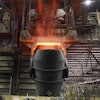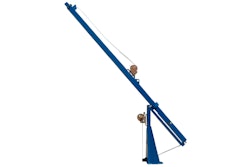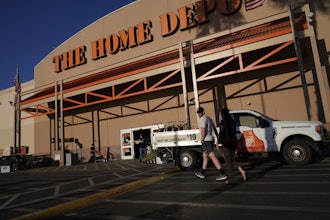This blog originally appeared on the "Creating Supply Chain Excellence" blog by Tompkins International.
Waiting until February to provide a 2014 Outlook has the advantage (or disadvantage) of being able to read the dozens of other views and predictions already out there. Whether the predictions are in general for supply chains, by industry segment, by technology, by solutions, or by market, the number and variety expand each year.
As a strong advocate of working with smart strategies, and especially the right Operations strategies, I will comment on top priorities for CSCO’s and other C-Levels who drive Operations. To focus this discussion, I would like to refer to 2014 as the “Year of the Customer”. Not to adopt the Chinese tradition of naming years; but to emphasize the dramatic changes we are seeing and expect to see increasingly focused on the “customer experience”. It has been several years since we have seen the customer treated so prominently in almost every industry, and actually driving new strategies.
While companies have evolved over the past 10 years to mass merchandising, large volume orders, standard operating practices, and marketing demographics (thus the push to “Big Data”) not so quietly recently has come the trend toward personalization, which is so needed to appeal to both consumers and businesses alike. We all know that the Internet changes everything, but no one has been certain how the opening up of multichannels would impact selling, ordering, fulfilling, delivering, and satisfying. Amazon continues to exceed all predictions of growth – and the selling of “everything from A to Z” has proven that both B2C and B2B are wide open for growth on the Internet.
So, the “Year of the Customer” will see massive changes of Operations strategies – which determine capabilities, business and operating models, customer experiences, and supply chains – not just by retailers, and CPG companies, but by all businesses. These “personalized omnichannels” will dominate the supply chains going forward, as having too many choices translates into operational challenges. How can we personalize our sales and marketing, and related operations, without changing our supply chains? It just cannot be done.
Let’s consider 5 big predictions for Supply Chain Strategies in the Year of the Customer:
- All companies will have to deal with personalized multichannels – not just retailers. The opening of an online market for any company’s goods, no matter who does that, creates the need for new supply chain Operations. While the business strategy determines what products will be sold in what markets, and why customers will buy them, an Operations strategy MUST determine the capabilities needed to meet the service promises. This is every company’s business model and operational challenge.
- How will companies deliver to personalization and still remain profitable? It is well known that the cost of customer services can easily overrun the cost of infrastructure and processes. It takes superior skills to balance these two, and we will see new tools and models for dealing with this vis-à-vis online ordering growth. The new “holy grail” of supply chains is more than balancing supply and demand – it is balancing costs vs. services, again. And, yesterday’s Network Planning models do NOT fit this issue. Modern network design considers both costs and services, and profit contribution. This requires scenario evaluations, and creative ones at that. Fulfillment centers must be different than distribution centers made for “pallets-in, pallets-out”; furthermore, they may need to be in many different locations. Capital investments need to be made carefully, as markets and customers change more frequently. Supply chain “flexibility” will finally become more required, not just visioned.
- Customer Experience Management (CEM) will become the buzz word in 2014 for the new business and operating models. While CRM has fueled relationships, CEM will fuel personalization. This will give rise to customer innovations such as those being led by Amazon – e.g., same-day delivery, Sunday delivery, alternate locations, consolidated orders at shopping Malls, expanding product lines, new delivery methods (drones?), and beyond. Innovating the customer value proposition (why buy from us?) will become necessary even for survival. We have already seen Retailer examples of this (Best Buy, J.C. Penney, others) so get ready for much more. The Dell strategy of “transform, connect, inform, and protect” has relevance for everyone.
- Expect another year of disruptive technologies that impact the customer. New technologies and its creative uses such as robotics, mobile Internet, social media, near real-time supply chain demand-driven, POS unified transactions, and “Connecting Everything”, will impact supply chains and their capabilities as well. Again, finding ways to improve services, while not raising prices out of market, and still earning profits, is the NEW CHALLENGE. The only way to do this is to introduce new technologies that are smart and enhance productivity. The Supply Chain strategy issue is what do we need and how do we determine that? These are strategic choices to be made by the CSCO and his/her peers, and not by other corporate interests.
- And, far from least, is the process for defining operations strategy itself. Before, supply chain leaders drove their networks and processes by demand forecasts out 2-4 years. Supply chains were there to “deliver” as expected. But, something happened and the “expected” has all too often not occurred. Not only is this due to the rapid expansion of online ordering by consumers and businesses – but it is also due to more rapidly changing market conditions – for example, the economy, business and community relocations, the near-shoring, the product proliferations, the many pharma drugs coming off patent, the changing preferences of customer groups (and within groups), and new product flows, and other factors.
Business strategies are there to be enabled by supply chains. Yet surveys are finding that many supply chain managers do not believe that their supply chains are connected directly with strategic enablers. This is sad. CSCO’s need to change this attitude. The operations strategy needs to define what capabilities are needed to enable the business strategy and how to get them. This is the new CSCO agenda.
I hope these predictions for supply chain/operations strategies help supply chain leaders better prepare for 2014. When we anticipate certain trends, we can develop plans to deal with them; when we are surprised, we end up “fighting fires”, which unfortunately is too often the situation in today’s volatile markets.






















